While of course you can book a trek in Nepal with a company based in America or Europe for several thousand US dollars (most averaged $5000 pp), we found both better prices and excellent service by waiting to book our trek until we actually arrived in Kathmandu. I will admit that I was nervous doing this and I was afraid that all of the treks would be sold out or not as good. However, Glenn had done his research and was sure that it was better to wait and I trusted him. He was right.
We booked a 13 day trek to Everest Base Camp with Adventure Bound (the same company that arranged our sightseeing trip in Kathmandu). Our trek cost $1400 pp, including a guide, a porter to carry our bag, 3 meals a day and overnights in traditional tea houses along the route.
If you want to do a trek in Nepal, book it in Nepal.
Reason 1: you will get a better price
Reason 2: the money goes directly to a Nepalese company and helps the economy, which in my opinion is more worth while than supporting a large travel company that doesn’t really need the money.
– Rajan, who is the executive director of Adventure Bound and who booked our trek, is working to help the economy in his own country and also supports a girls and a boys home (orphanages) in Kathmandu and pays for the children to go to one of the best schools in the city. That is someone I am happy to give my money to.
Day 1: Kathmandu – Lukla (2840 meters) – Phakding (2610 meters)
Depart you hotel for Kathmandu Airport – domestic terminal
Note: at airport security in all of Nepal there is one line for men and another for ladies. I actually found this nice, the ladies line had all female security officers and it meant to make ladies more comfortable.
The domestic terminal is primarily people going on treks and seems like pure chaos.
Also, because the planes are so small, you are weighed along with your luggage. That was a first for me!
These flights into the mountains fly based on weather so DO NOT expect to fly at the time your ticket says. Apparently everything involving trekking is on mountain time. Our flight was scheduled for 9:00 but we didn’t even go to our gate until about 10:00. This isn’t really a problem but it is important to be aware of, particularly if you choose to do this without a guide.
The airplanes are very small.
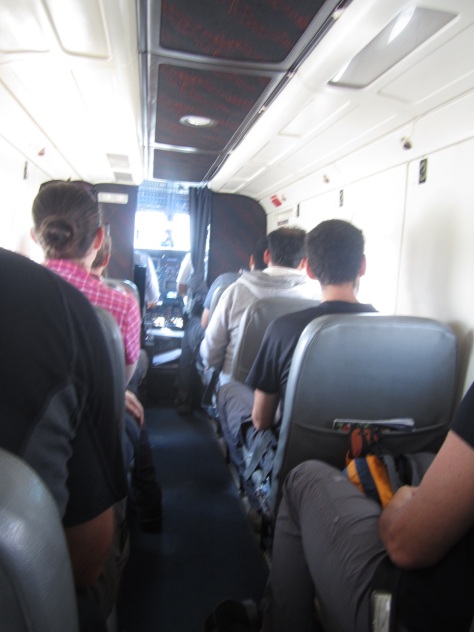
If you do not like flying either this isn’t the trip for you or just medicate so you won’t remember the flight 🙂 The positive thing is that the flight is very short, just about 30 minutes and the pilots are excellent. If you can get over your fear of the teeny tiny airplane, the views out the window are beautiful.
Glenn very nicely left our the fact that the airport in Lukla is the most dangerous in the world until after we landed (good husband). It is dangerous because the runway is very short and goes straight into the mountain. However, try not to worry. These pilots make this flight, and more importantly the landing, every day, several times a day. Also, if the plane gets to Lukla and the weather does not permit them to land, they simply fly back to Kathmandu and try again tomorrow.
Weather is typically best in early morning in the mountains, so it is best to book the earliest flight to be sure you stay on schedule.
Once we landed we met our porter and he took our bag ahead to out tea house in Phakding (the porters move WAY faster than we did).
The first day’s trek is nice. Some do it in just 2 hours. We had a much slower pace so we took 4 hours to do it. I really recommend taking your time. The villages and tea houses where you spend your nights are not terribly exciting so just enjoy the nature along your trek, it is beautiful.
Today you will cross the first of many wire bridges. We did not love them but you have to just look straight ahead and do it. Tip: try to make sure there are no yaks or porters coming in the other direction because the bridges are narrow and it is not fun to meet them in the middle.
Day 2: Phakding (2610 meters) – Namche Bazar (3440 meters)
Todays trek is LONG. Be ready for it.
Apparently some people do this stretch in about 4 hours…I don’t know how. We walked for about 7 hours. The elevation change is great and you will literally be climbing up and down mountains today.
You can do it. We did it. But be ready for a long day.
The best advice I can give is take it slow, take a lot of breaks, and drink more water than you think you need.
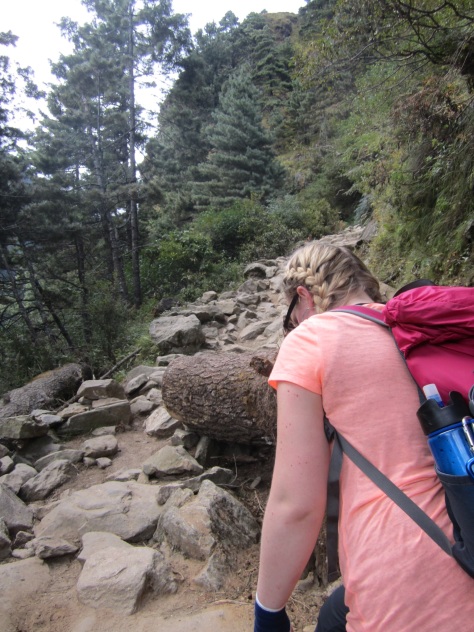
Good visual of what much of the days trek looked like.
It is a beautiful stretch and you will see some amazing things.
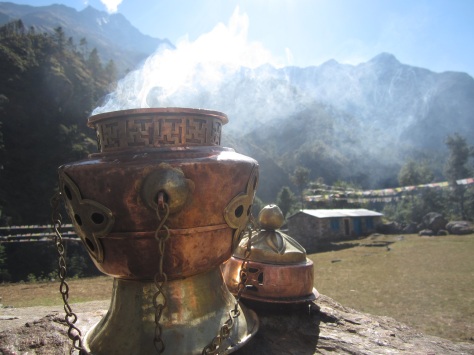
Burning incense in the morning for the gods
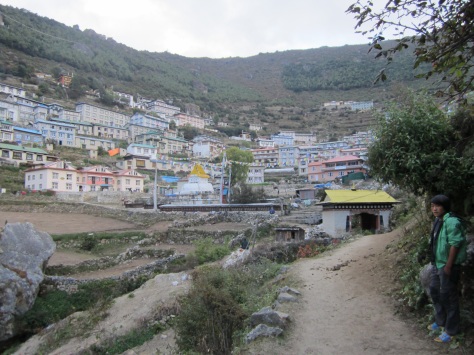
Namche Bazar. After such a long day this is a very welcome sight.
Day 3: Rest Day in Namche Bazar (3440 meters)
With such high altitude, it is important to take rest days to allow your body to acclimate. Typically most treks schedule the first rest day in Namche Bazar. 1. because from Phakding to Namche is a hugh elevation change and 2. because Namche is a fairy large village will many tea houses and a decent amount of things to do.
One surprise to me was that even though this is a rest day, you are still expected to do about a 2-3 hour hike up and down a small mountain. The main reason is the altitude. By going to a higher altitude and then back down you help your body acclimate.
The best part of todays hike was that we got a great view of Mt. Everest!
There are beautiful views
We also visited the worlds highest airport: basically just a field full of rocks that airplanes occasionally land on 🙂
In the afternoon we went to Liquid Bar for a free movie!
Every day at 3pm they have a free showing of the Everest Imax movie (about 1 hour long).
The bar also has great beer and excellent (free) internet.
Day 4: Namche Bazar (3440 meters) – Tengboche (3860 meters)
The first half of todays trek is lovely and flat. Enjoy it!
The second half is downhill and then 1-2 hours uphill to Tengboche.
Again this was a day that our guide Raman said some people finish in 4 hours but took us 6-7 hours. At the end of the day, I swear Tengboche was ’10 minutes away’ for about 45 minutes…
Along the way we passed a stupa and got another great view of Everest.
We also has the unfortunate experience of loosing our camera along this section. It fell out of a pocket. Luckily the Nepalese people are friendly and VERY honest and we ended up getting it back the next day!!!!
Day 5: Tengboche (3860 meters) – Dingboche (4410 meters)
This morning started very early for an excellent reason. There is a monastery in Tengboche and in the morning at 6:30 trekkers are invited to watch the monks in their morning prayer. This was an amazing experience! (no photos allowed)
The trek today is relatively flat compared to the previous several days which was a welcome change. It is also incredibly beautiful.
(Sorry for no pictures – we did’t have a camera during the day).
As for our camera, Glenn and Raman had asked several people yesterday if they had seen a camera – none had – and they gave Ramans cell phone number just in case. Later in the day, we got a call – supposedly someone had it! This man’s friend had found it on their way to Namche, called him to say they had it, they then brought it back to him. He then luckily was heading in the same direction as us and said he would bring it to us either at Tengboche or Dingboche. At dinner in Dingboche, I saw a man walk in, he looked like he was looking for someone or something so I asked Glenn ‘is that him?’ and it was!!! and best of all he actually had our camera!!!
We couldn’t believe that it worked and we actually got our camera back. We must have good karma! amazing and thank you to Raman and all of the Nepalese people who helped us.
DAY 6: Rest day in Dingboche (4410 meters)
In Dingboche you take another rest day to get used to the elevation. We took another ‘short’ 2 hour hike up a ‘hill’ for the high elevation and the view. Beautiful. I found the hike a bit challenging on the way down because it was steep and mainly sand and gravel. I was afraid of falling and went very slowly but in the end it was all fine.
The day ended with the most beautiful sunset.
Day 7: Dingboche (4410 meters) – Labuche (4910 meters)
This stretch of the trek is relatively flat but the altitude is high so it is still important to go slow. There is only about 57% as must oxygen here as at sea level so everything takes more effort than you think it should.
To be honest, the landscape here is more what I pictures when we first decided to do the trek. You are above the tree line so it is all rocky open space and mountains.
You will also start to see a lot of yaks grazing. They are generally calm and wont bother you if you don’t bother them.
And then it started to snow…
At first we thought ‘how nice and pretty!’ but then it kept snowing… By the time we reached our tea house there was a few inches of snow on the ground (very unusual for October).
Day 8: Labuche (4910 meters) – Gorak Shep (5140 meters) – Everest Base Camp (5364 meters)
Today was the day, the last stretch to get to Everest Base Camp.
Under normal circumstances (i.e. no snow) todays stretch from Labouche to Gorak Shep would not be terribly difficult. However, with snow this day was very, very difficult.
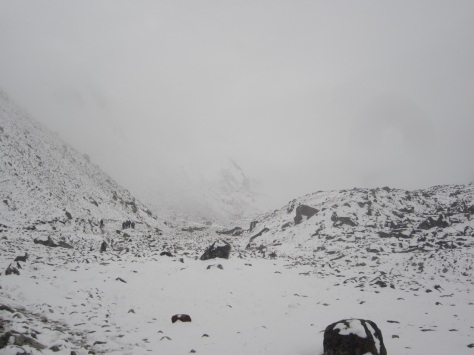
Glenn is ready to tackle to snowy weather
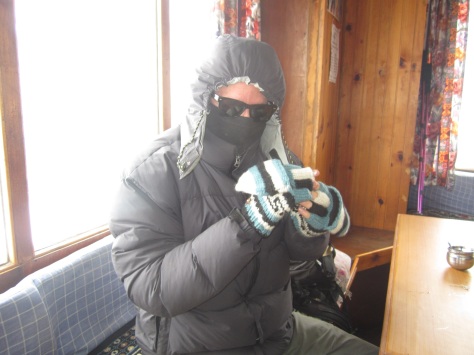
This is what the trek looked like
When we finally arrived in Gorek Shep at lunch time I was done. I just could not make it to Everest Base Camp so I just got a warm blanket and my book and got comfy.
Glenn and Raman decided to give it a go but they did not make it all the way to EBC because of the snow and strong winds.
Apparently, most people who do this trek also stop at Gorak Shep. The last stretch to EBC is not easy and also EBC is not apparently not that exciting unless there are several expeditions in progress. Currently, no expeditions are climbing Everest as the sherpas are on strike after many sherpas dies on the mountain last year.
Day 9: Gorak Shep (5140 meters) – Kala Pattar (5550 meters) – Pheriche (4240 meters)
After spending a night at Gorak Shep, it is typical to leave at 4:30am to climb Kala Pattar (small mountain) for a sunrise view of Mt. Everest.
I chose not to do this because the climb is steep, covered in nearly a foot of snow and would be done in the dark with only head lamps. I am not a strong enough climber to make this climb in those conditions. Glenn and Raman made the climb though. They went halfway up Kala Pattar.
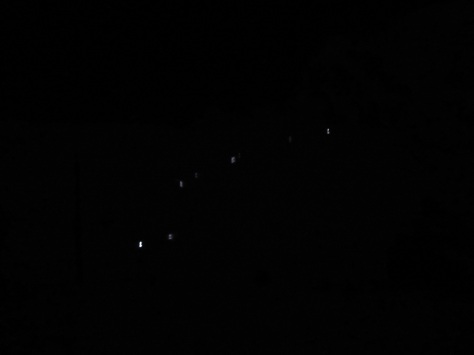
View of everyone climbing Kala Pattar. You can only see their headlamps
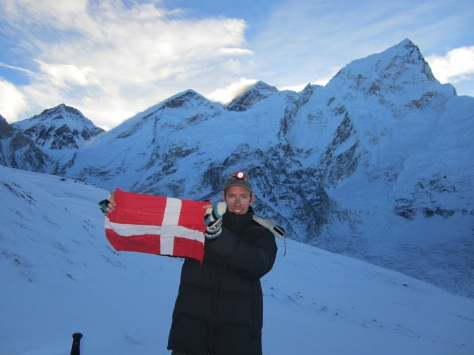
Glenn and Mt. Everest from Kala Pattar
When they returned, they convinced me to climb just 5 minutes to see a view of the top of Everest. It was worth it.
Then we started to climb down. That was a great feeling! From this point, everything gets easier by the hour and by the day.
Today you will climb down a fairly steep stretch but it is fashioned into a sort of large staircase so if you go slow it is now problem.
Then once you enter the valley, it is all flat until you reach Pheriche.
Day 10: Pheriche (4240 meters) – Namche Bazar (3440 meters)
This day is incredibly LONG! If you can split it into 2 days, I recommend that. Yes, most of the day is downhill but you are essentially fitting 2 days into 1 day (uphill this was 2 days – namche to tengboche and then tengboche to Dingboche). This stretch is 25 km.
Luckily I have the worlds best husband and he bought be a horse for the day so I could ride.
We stopped for lunch in Tengboche and were able to get a photo of the beautiful monastery.
We were exhausted by the end of the day. We trekked for about 8 hours. Glenn walking and me riding a horse. Glenn’s legs felt like jello and I had a serious case of ‘cowboy leg’.
Day 11: Namche Bazar (3440 meters) – Phakding (2610 meters)
Today was a lovely day trekking. It is all downhill and you go to lower and lower altitude so it gets easier and easier.
The day was sunny and warm and for the first time in days, we didn’t see so for the entire day!
We also has our last view of Mt. Everest. Simply beautiful.
Day 12: Phakding (2610 meters) – Lukla (2840 meters)
This is the last day of trekking and is nice and easy. We took our time with the trek but the path is easy compared to what we had done over the last 2 weeks. Really enjoy this day!
In the afternoon we spent a few hours exploring Lukla, which is really a lovely town. Definitely be sure to give yourself an afternoon here. There are shops where you can buy Everest Trek souvenirs. We both bought Mt. Everest baseball hats and I bought a sweatshirt.
There are also some funny knock-off shops like ‘Hard Rock’ and ‘Starbucks’
Day 13: Lukla – Kathmandu
On your last day, you will just wait for your flight back to Kathmandu. It is best to have a very early flight as the weather is more reliable.
Tenzin Hillary Airport (Lukla)
Food during the trek:
The food on the trek is generally good and very cheap by western standards. Most main courses average about $3. Of course it should be noted that as you get closer to EBC the prices increase as it takes longer for supplies to be carried there.
If you have not booked a trek with food included I recommend about $15 a day for food/drinks/tea
My number one recommendation when it comes to food along your trek – do not eat meat!
The mountain people of this area are primarily Buddhist and they believe the mountains are home of the gods. Because of this, no animals can be slaughtered in any of the villages along the trek route.
This means that all meat is flown from Kathmandu to Lukla and then carried by porters up the mountains to the villages. This meat is not refrigerated for up to a week and is not even covered, it is exposed to the air and bugs and bacteria. The locals can eat the meat because their stomachs are accustomed to the bacteria.
However, for westerners, if you want to enjoy your trek and avoid terrible stomach issues, best to become a vegetarian for 2 weeks.
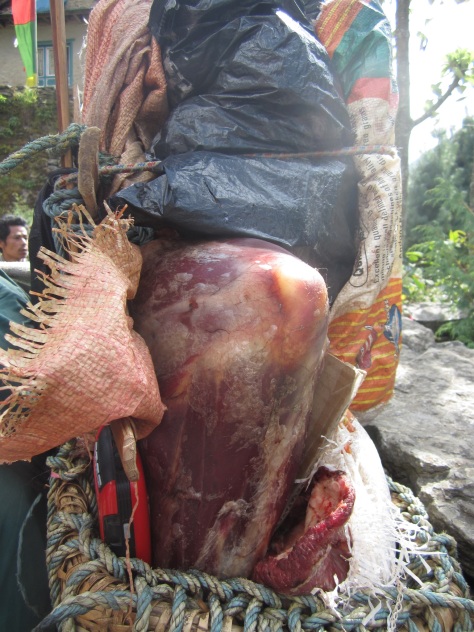
this is what the meat looks like as it is carried up the mountain…and this is why we ate vegetarian for 2 weeks.
The Tea Houses:
All along the trek route are tea houses, basically combination restaurants and guest houses, These are, in my opinion, a much better option for your nights during the trek than camping. However, it is important to note that there is nothing luxurious about these tea houses.
The rooms are essentially plywood boxes – no insulation, no decoration, no rugs, etc. There is also NO HEAT so be sure you have a warm sleeping bag. Also, all of the tea houses have blankets so be sure to ask for one.
Finally, we recommend using your backpacks and gear to insulate the windows because you will be much warmer. Because Glenn did this every night we only really had one very cold night and that was because it snowed.
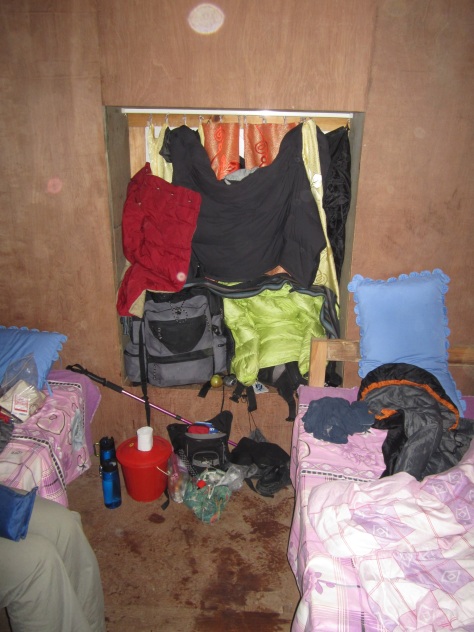
our window after Glenn insulated it.
I also recommend bringing a deck of cards. This is a really nice way to spend the evenings sitting in the common room of the tea house (that is where the fire is so it is warm and everyone hangs out there until bed).
Toilets:
While some of the tea houses do have western toilets, this is not the norm. Primarily, along your trek you will be using the traditional asian ‘squatting toilets’ so I hope you have good balance.
These bathrooms also DO NOT have toilet paper so be sure that you have your own. If you can, buy some in Kathmandu because they cost only 10 rupees. Along the trek toilet paper costs between 100 and 250 rupees (it gets more expensive as you get closer to EBC). However, for westerners the prices are still cheap and from experience I will tell you, you will pay any price for that toilet paper.
Along the trek once you get beyond Namche Bazar, if you are lucky enough to have a western toilet you cannot put toilet paper in the toilet, instead you put it in a trash can. Also the toilets do not actually flush. Instead you fill a pitcher with water from a barrel next to the toilet and add that to the toilet water.
Porters:
Everything in the mountains is transported by porters, everything. These men carry up to 150kg in baskets on their backs up and down the mountains. There are no roads up there, only trekking paths so the porters are the only way the villagers can get what they need.
While you are trekking, be aware of the porters as they have the right of way.
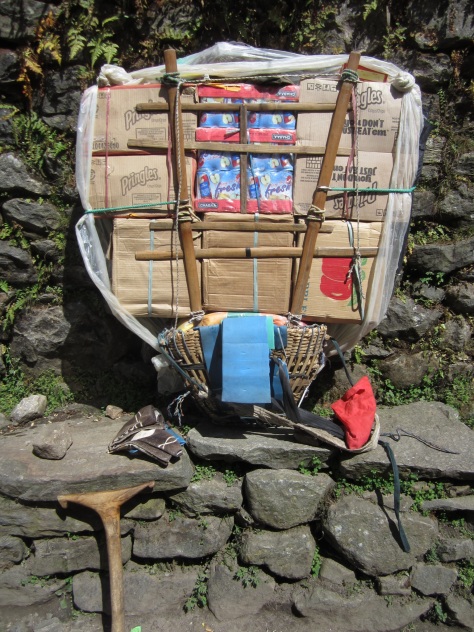
all porters carry a wooden cane to help them walk and to rest their pack on when they need a break.
Altitude:
Most of the trek is done at high altitude. This is rough on the body so be careful and go slow. Everyone we talked with told us that most often it is the young and physically fit trekkers that get altitude sickness because they trek way too fast. There is no rush, the trek is the trip so take your time. Also be sure you take your rest days in Namche Bazar and Dingboche to get used to the altitude.
If you are feeling a bit sick (headache, nausea, etc) you can take some Dimox (altitude medicine). Several hikers we met were even taking this in small doses as preventative medicine. Talk with your doctor and your guide about the best method for you.
I had no symptoms of altitude sickness but Glenn had some headaches as we got close to EBC, however for him going slow, water and an Advil were enough to help.
Packing List:
Clothes:
– a good pair of boots
– I cannot stress this enough. If you have good boots it will save your trek. If you have uncomfortable boots it will ruin it.
– I used a pair of Kangaroos. I didn’t know the brand before but I found a great deal online and went for it. We ordered our boots a few months before our trip and made sure they were broken in before our trek (very important). I did give the boots away at the end of the trek because we are traveling but they were so comfortable and lightweight I plan to re-order them when I am home.
– 2 pairs of pants
– Glenn was fine with only 1 pair, but I found it nice to have 2 in case one pair got wet (thanks to the snow), then I had something to change into for dinner at the tea house and for the next day if the pants did not dry overnight (sometimes it was too cold)
– I had 1 pair of j.crew cargo pants and one pair of REI convertible pants that zip off into capris.
– different tops to layer
I packed:
– 1 tank top
– 4 t-shirts
– 2 long sleeve shirts
– 1 EMS insulated hiking shirt
– 1 thin zip up sweat shirt
– 1 northface fleece
– socks and underwear
– I recommend packing enough for at least a week. there are no laundry facilities (other than washing in the sink) and as you get closer to EBC the nights are cold so laundry is not quick to dry.
Gear:
– sleeping bag (can be rented in Kathmandu – ours was included in our package)
– down jacket (can be rented in Kathmandu – ours was included in our package)
– some may tell you a down jacket is not needed but I recommend having one anyway. We went trekking in October but at Base Camp we had freak snows (average 6 inches in one night, more in some places – there were avalanches in Anapurna, another popular trekking region in Nepal) and temperatures around or below freezing at night. Better to be safe and prepared, than sorry.
– walking sticks (1 or 2 per person depending on preference) – the ‘path’ of the trek is not a smooth, well kept trail. You will be up and down mountains, hundreds of meters in a day, walking on mud, gravel, boulders and maybe even ice. Walking stick will help you to keep your balance.
– we bought ours in Kathmandu (Thamel area) for $3 each

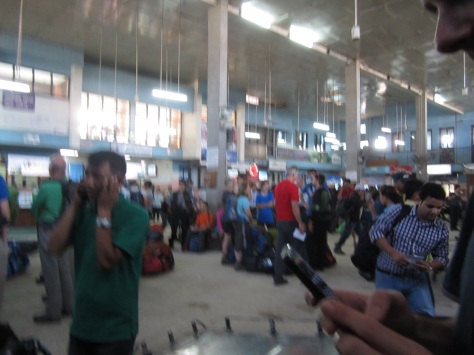
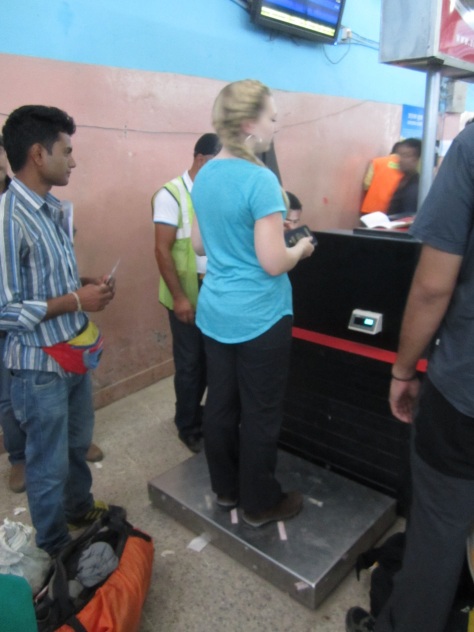
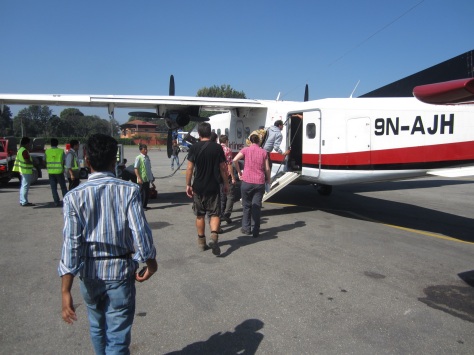
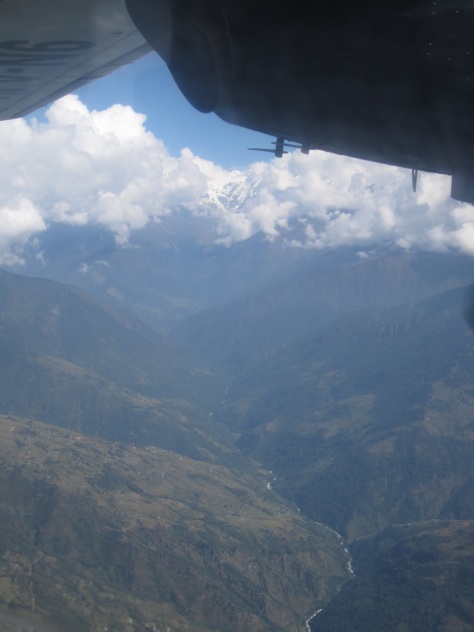
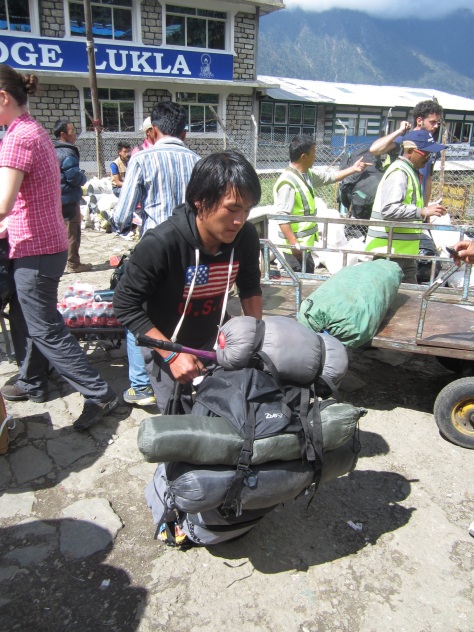
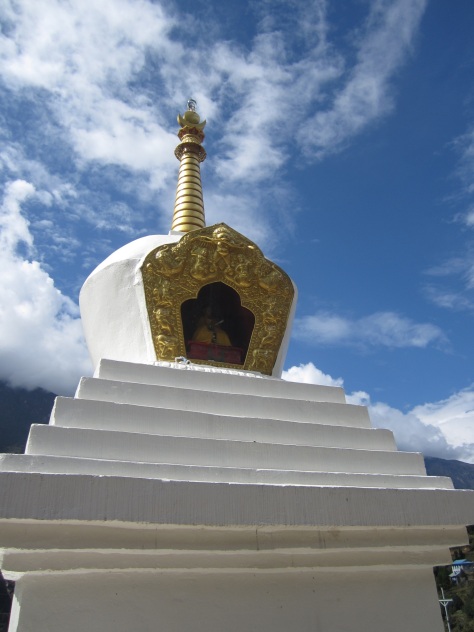
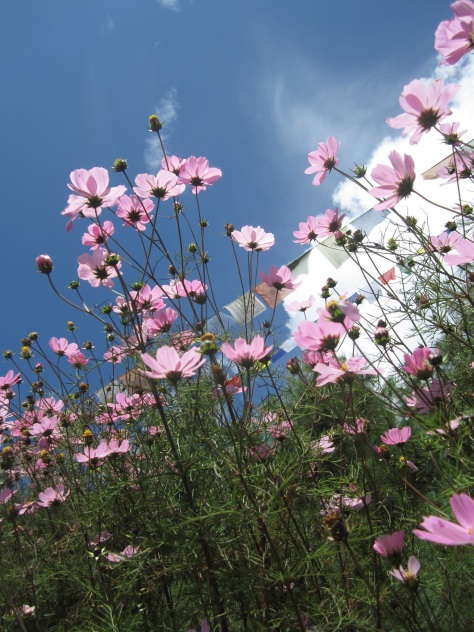
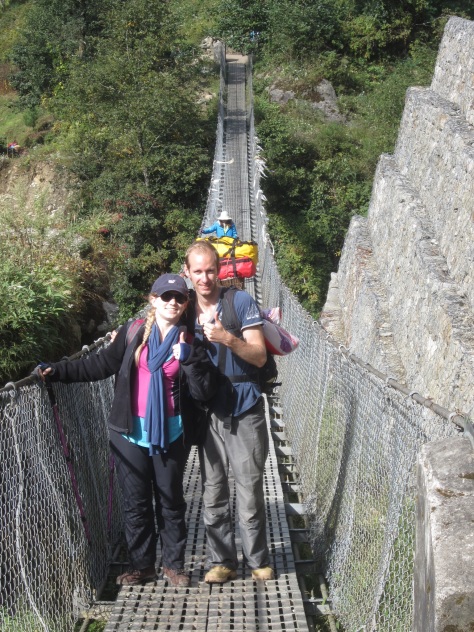
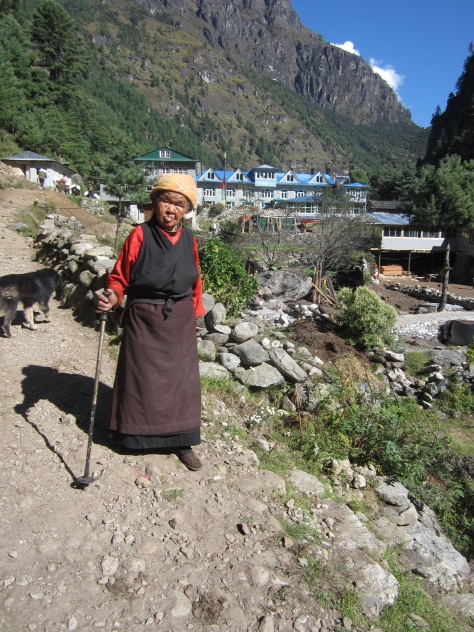
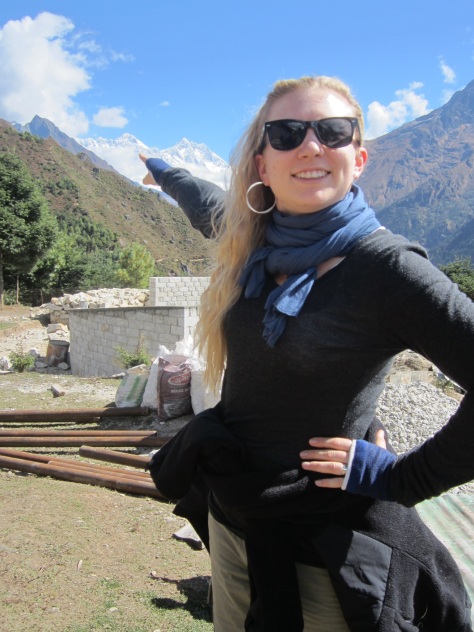
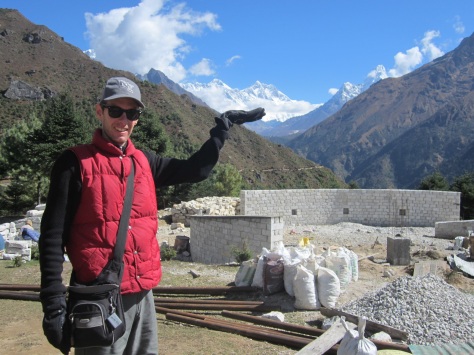
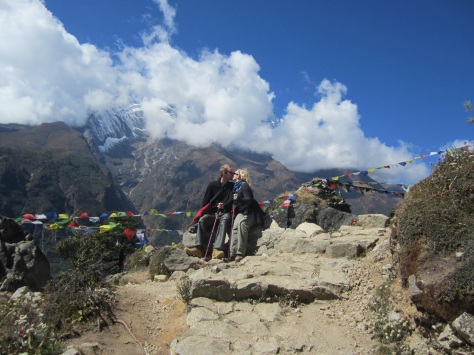
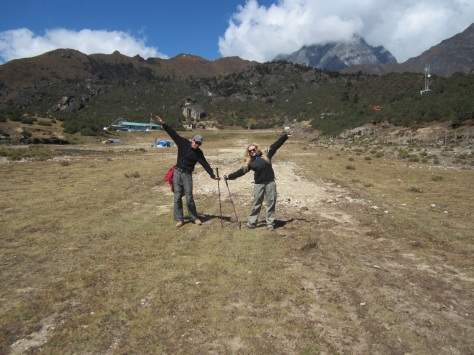
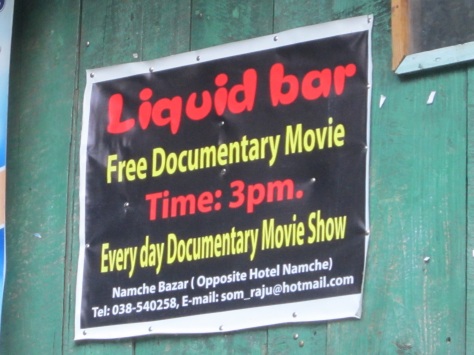
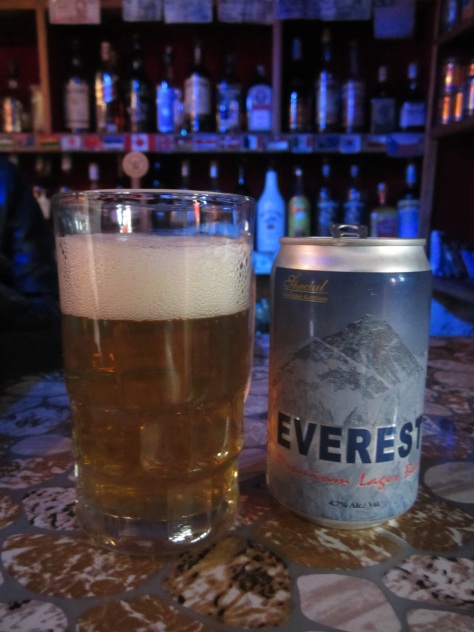
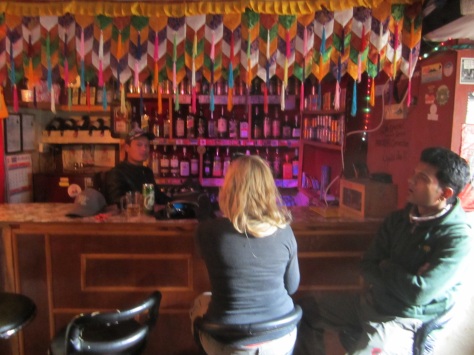
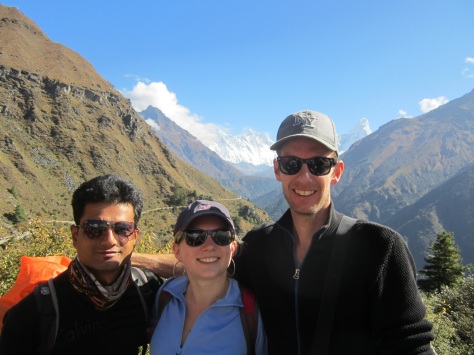
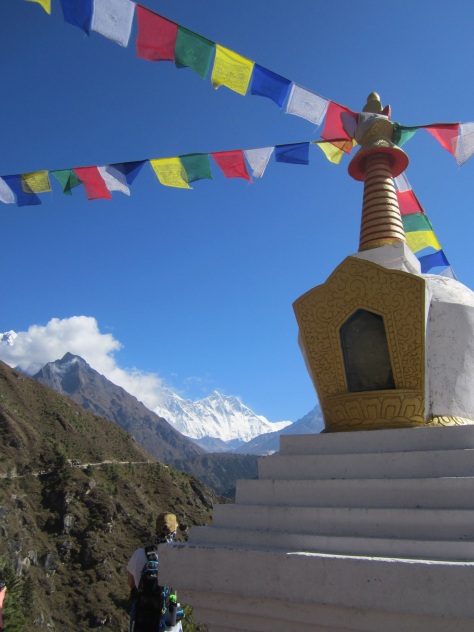
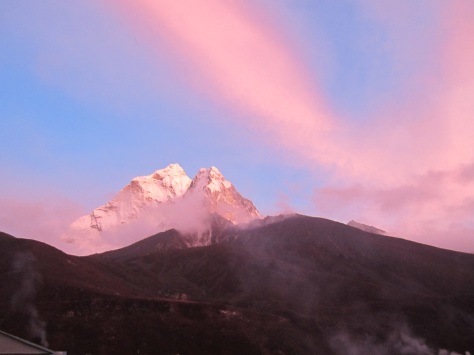
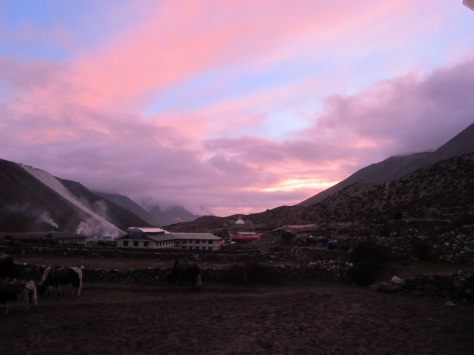
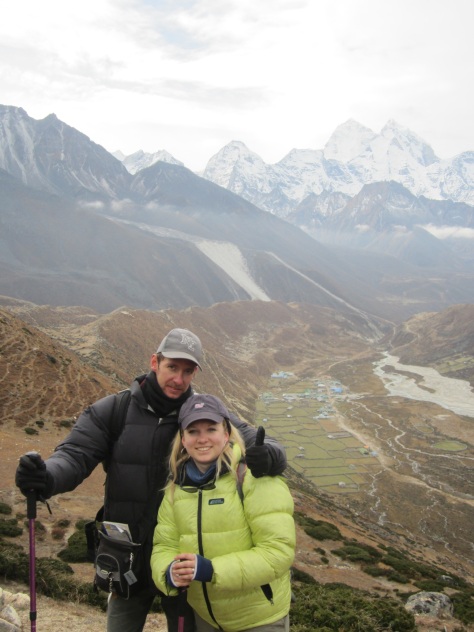
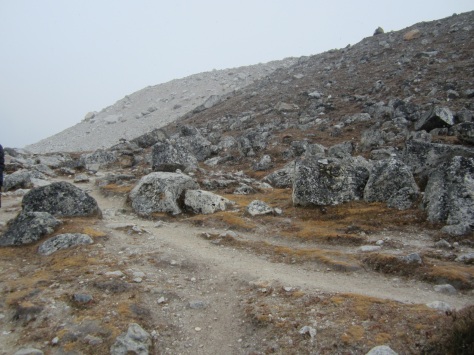
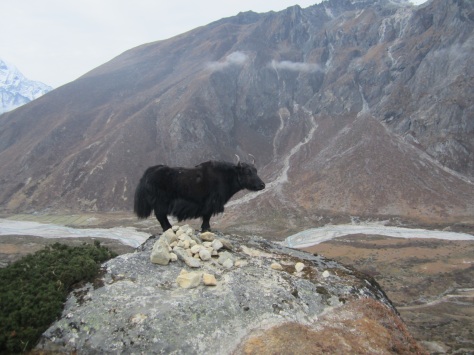
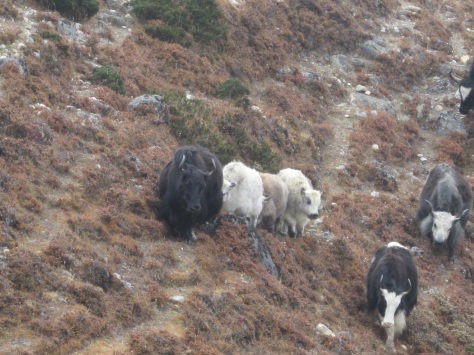
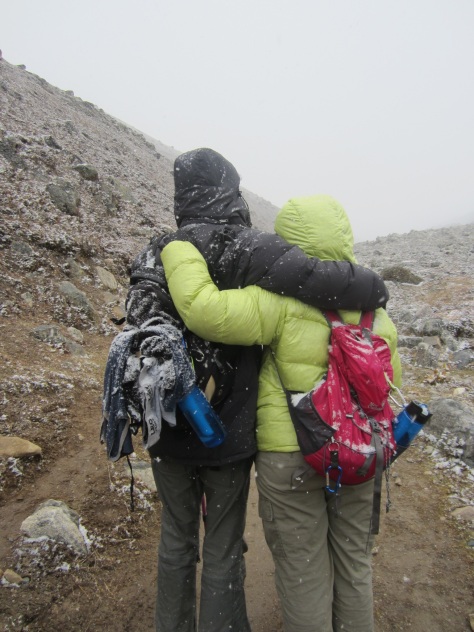
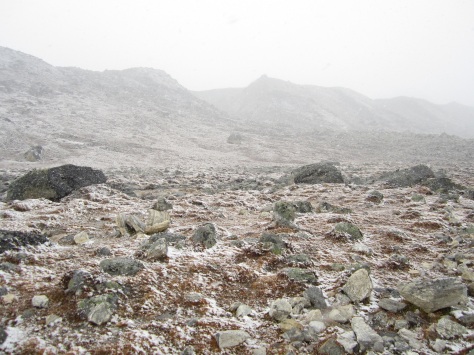
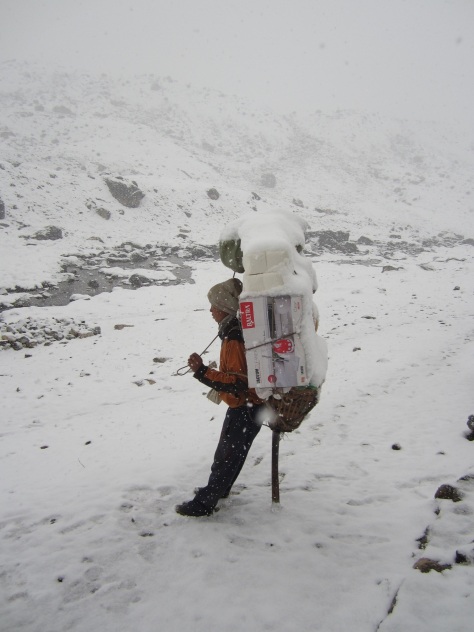
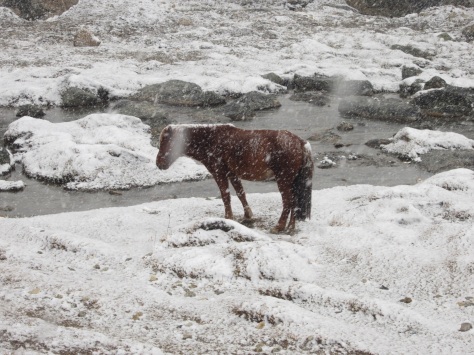
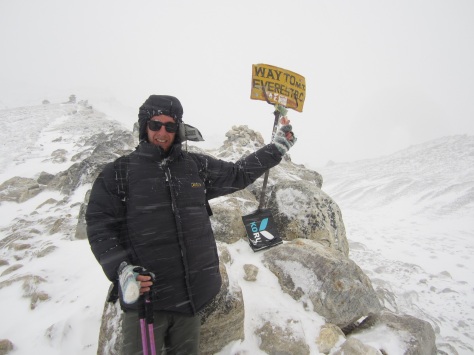
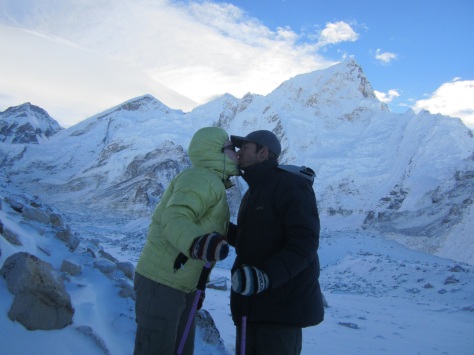
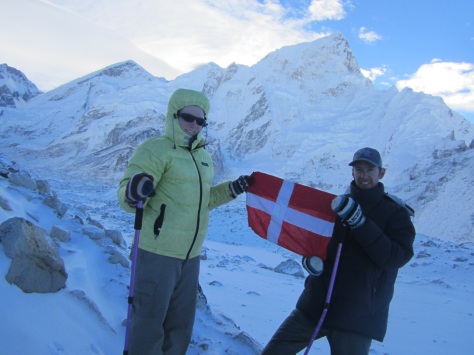
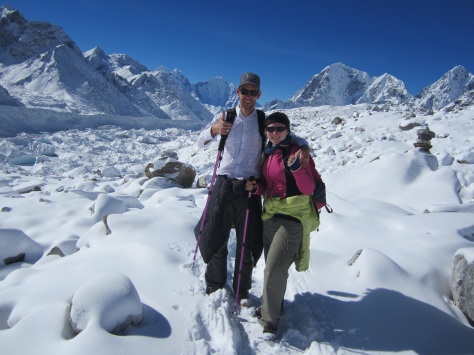
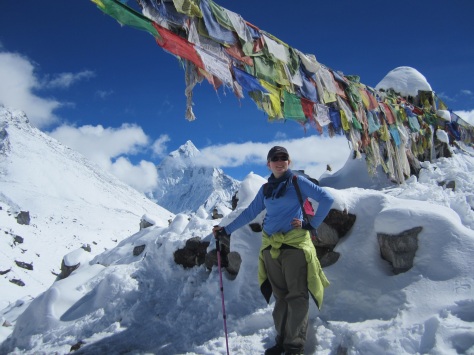
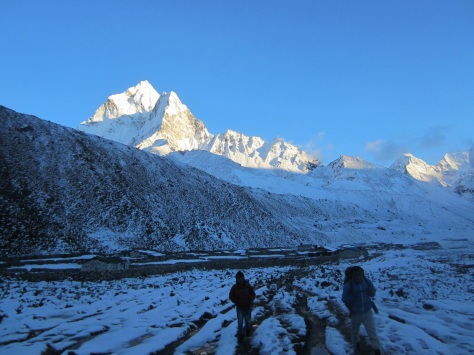
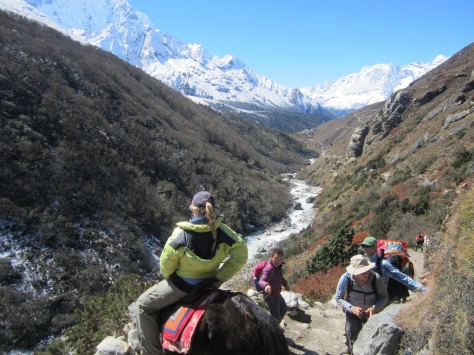
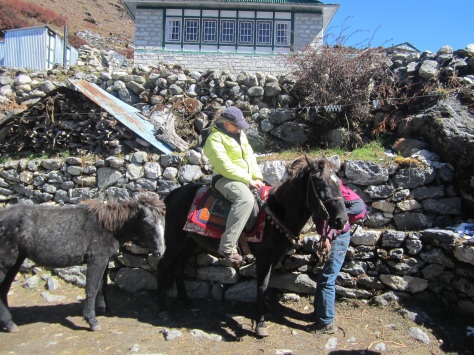
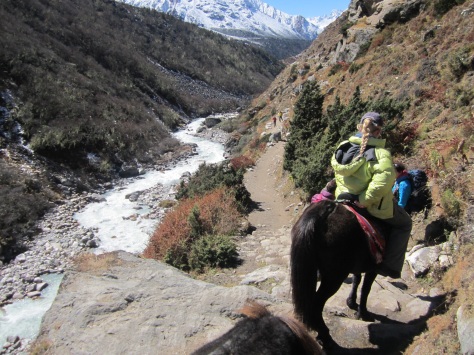
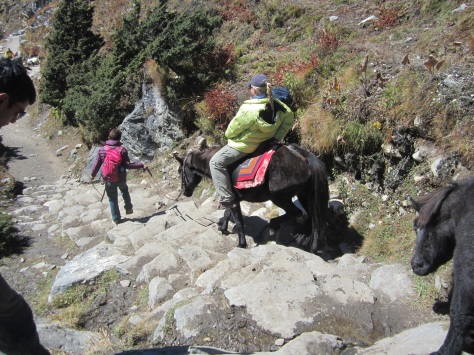
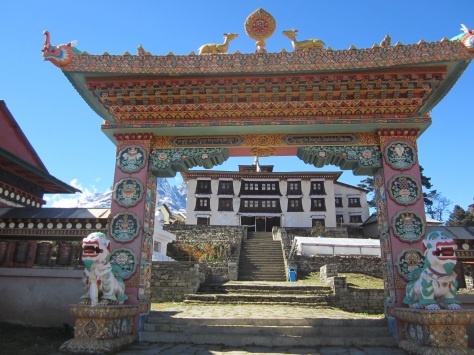
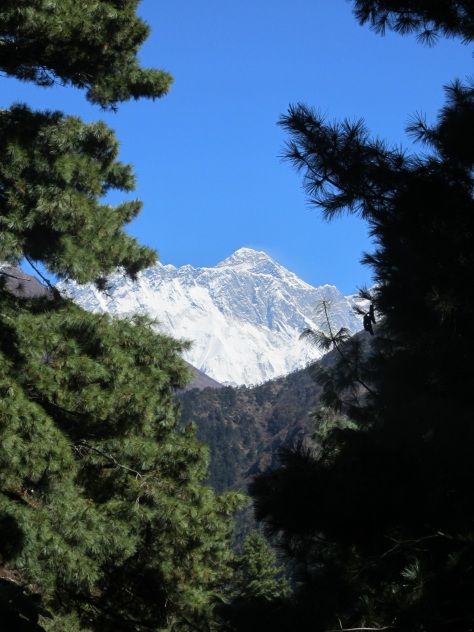
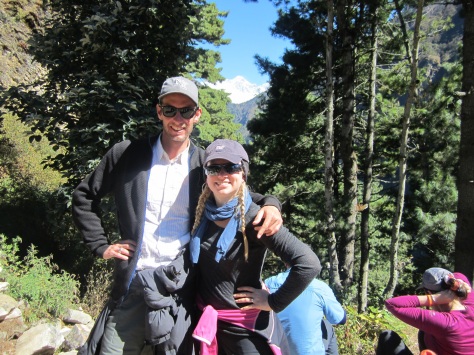
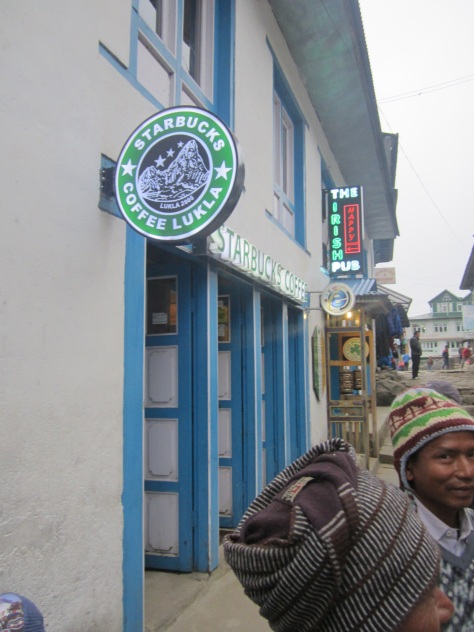
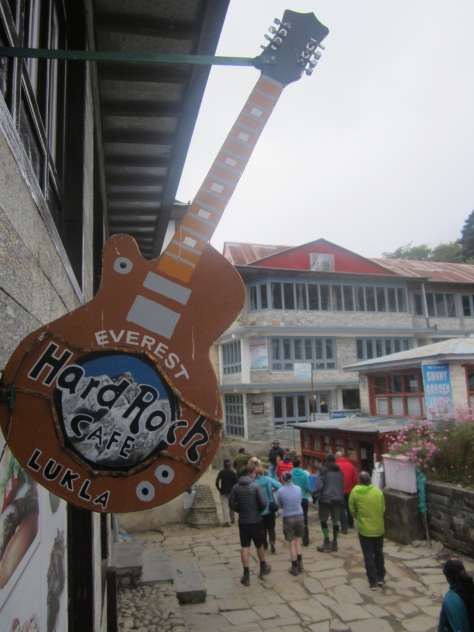
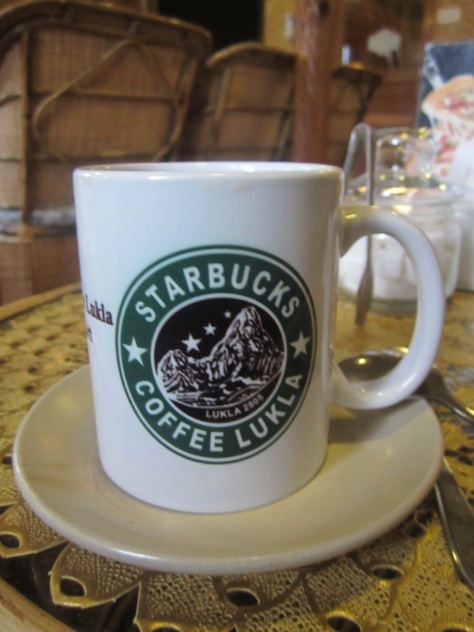
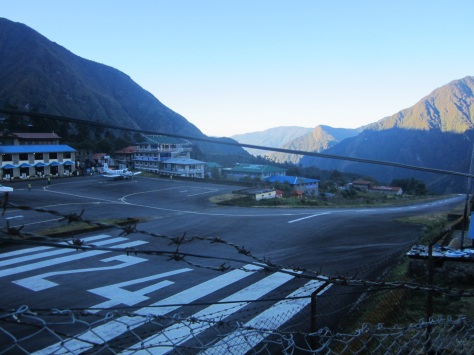
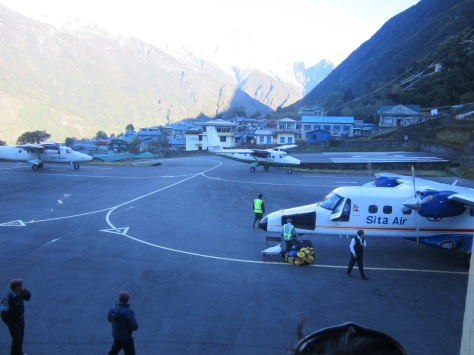
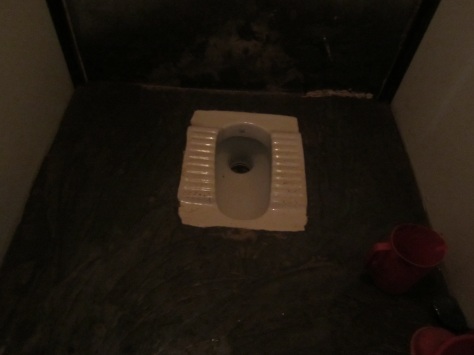
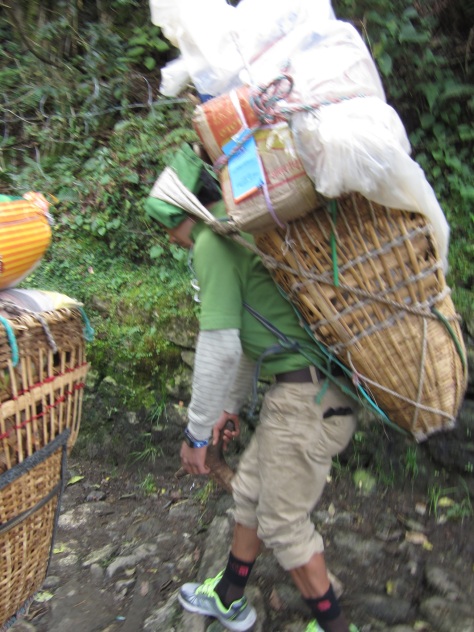
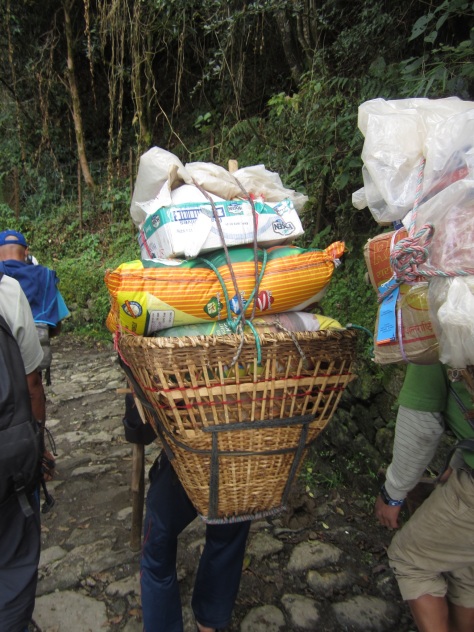
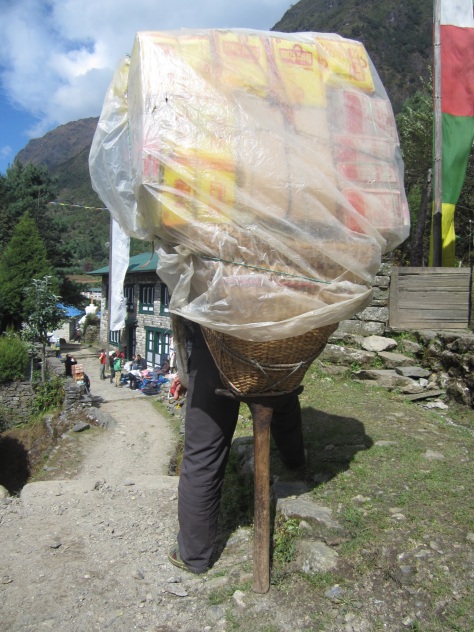
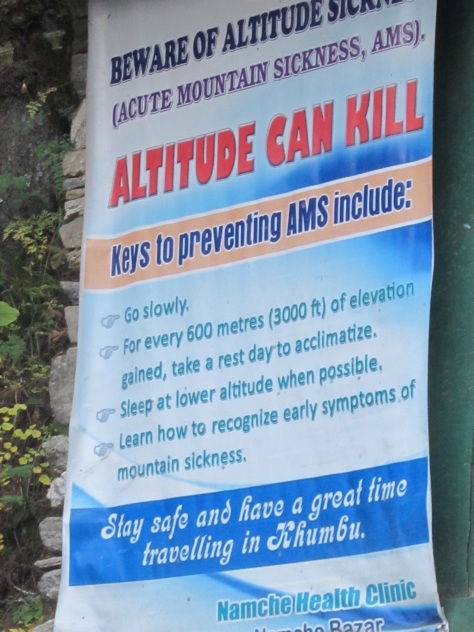
Reblogged this on Purushottam Blog.
Arden, you write so well, it engages the reader so; that I can’t wait for the next section. That combined with stunning pictures now I want to go there. Love you…dad
Thanks dad!
I am having so much fun writing these posts!